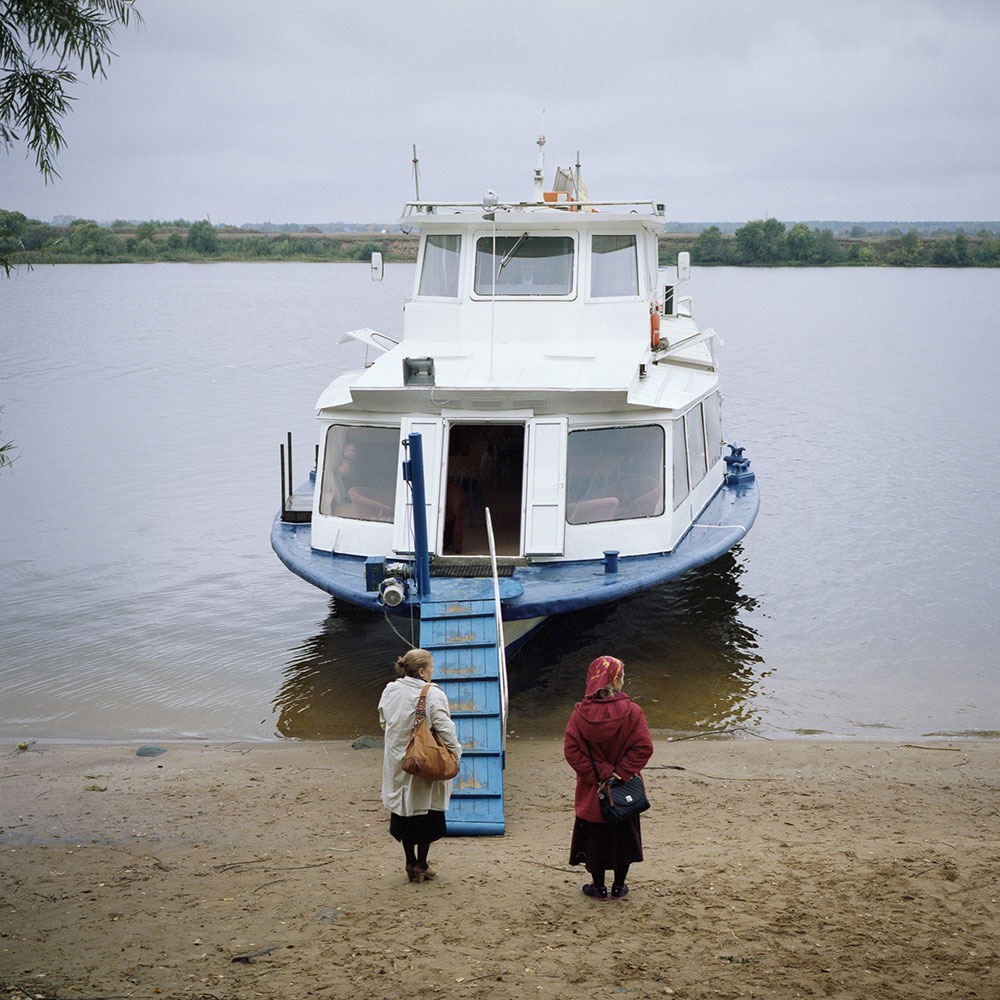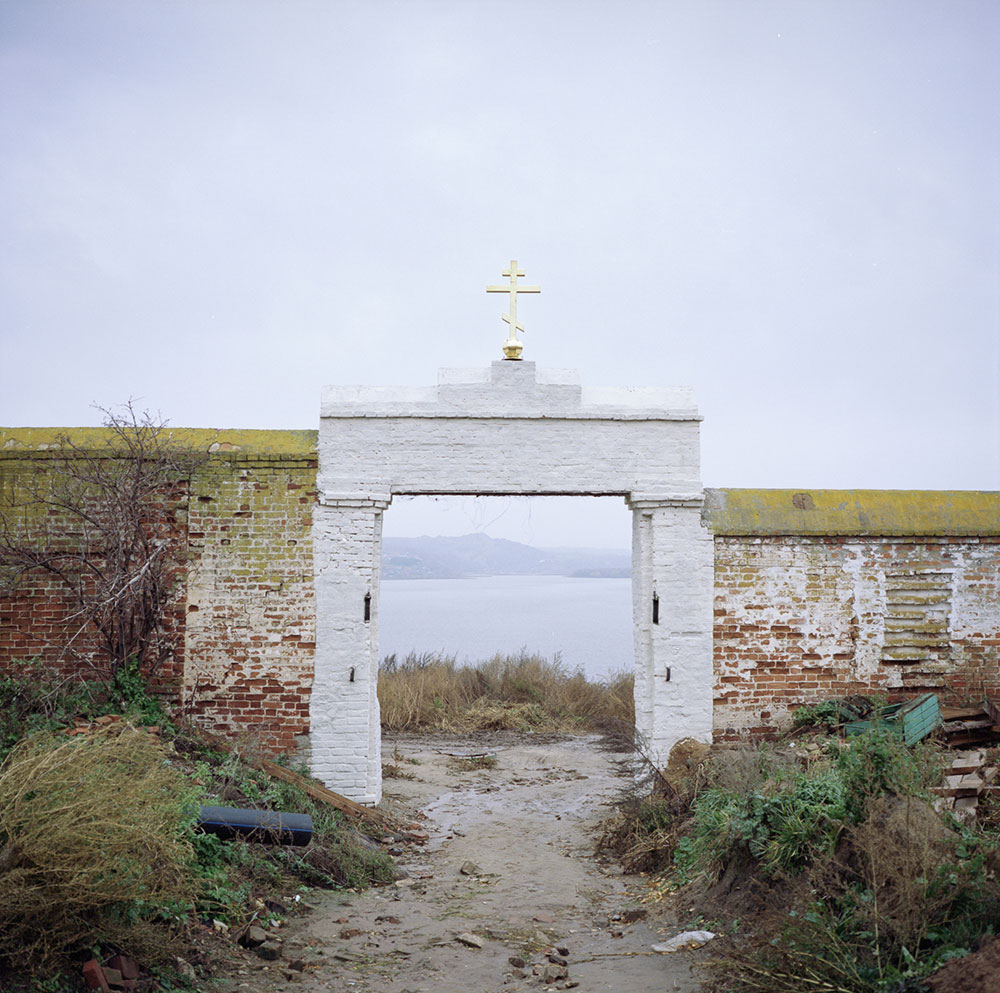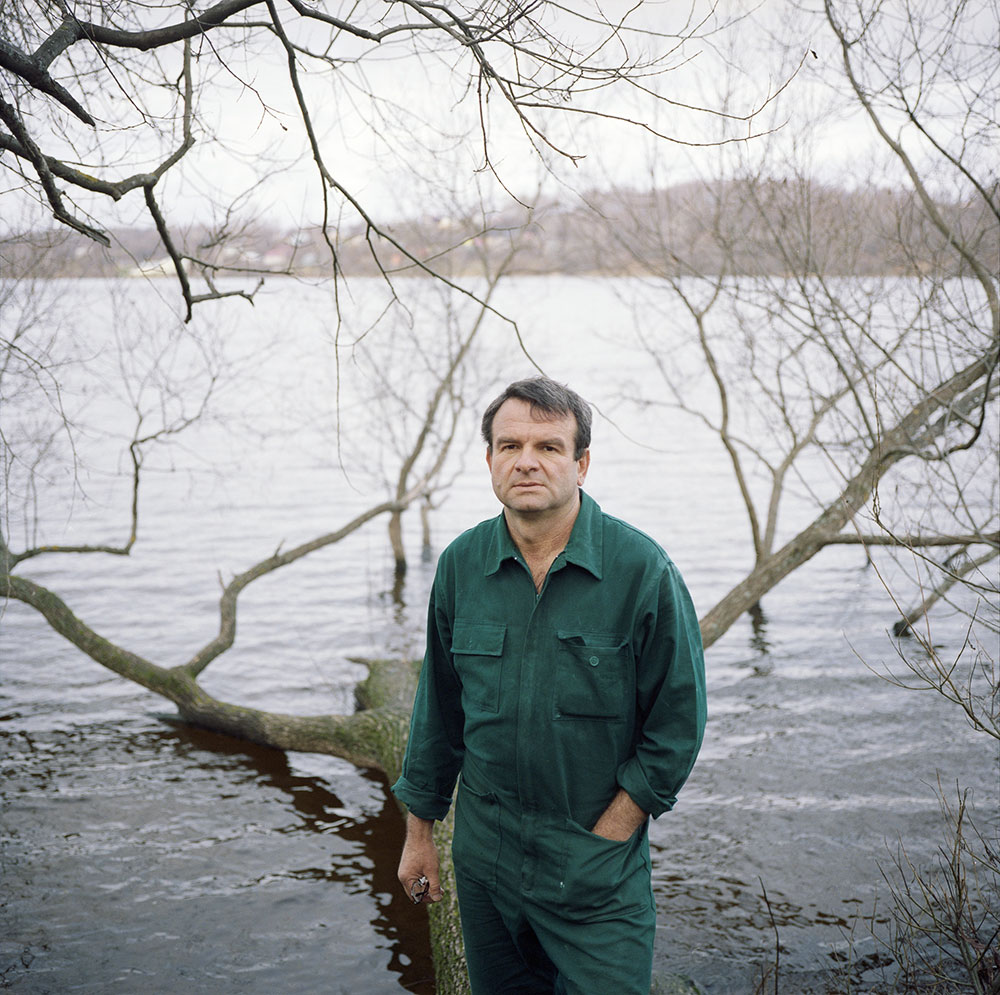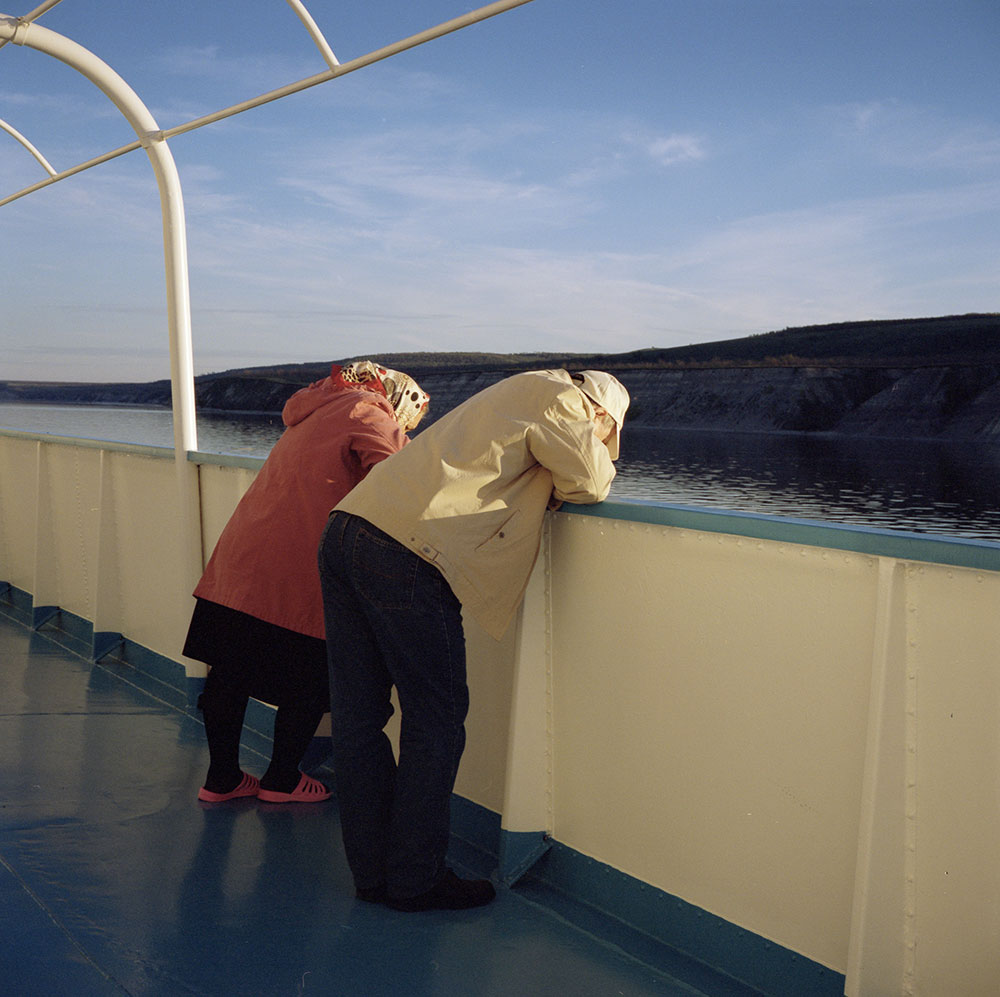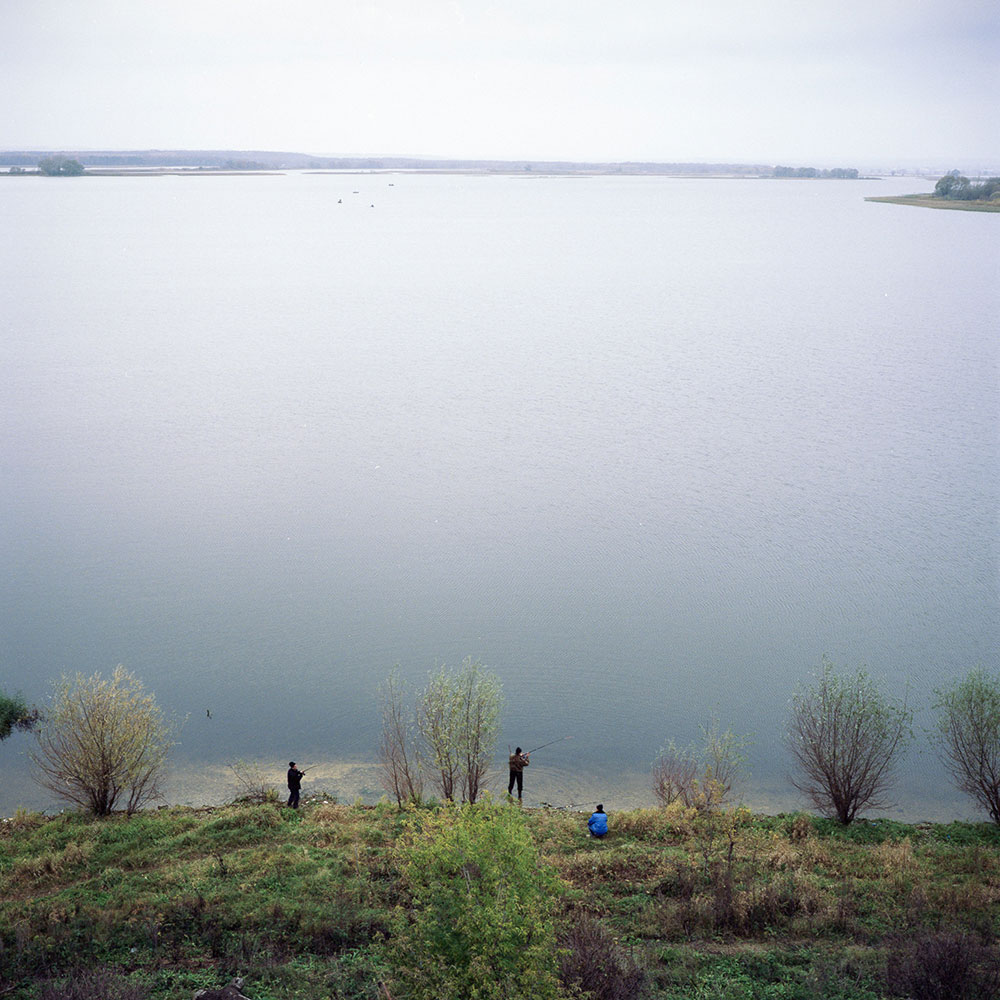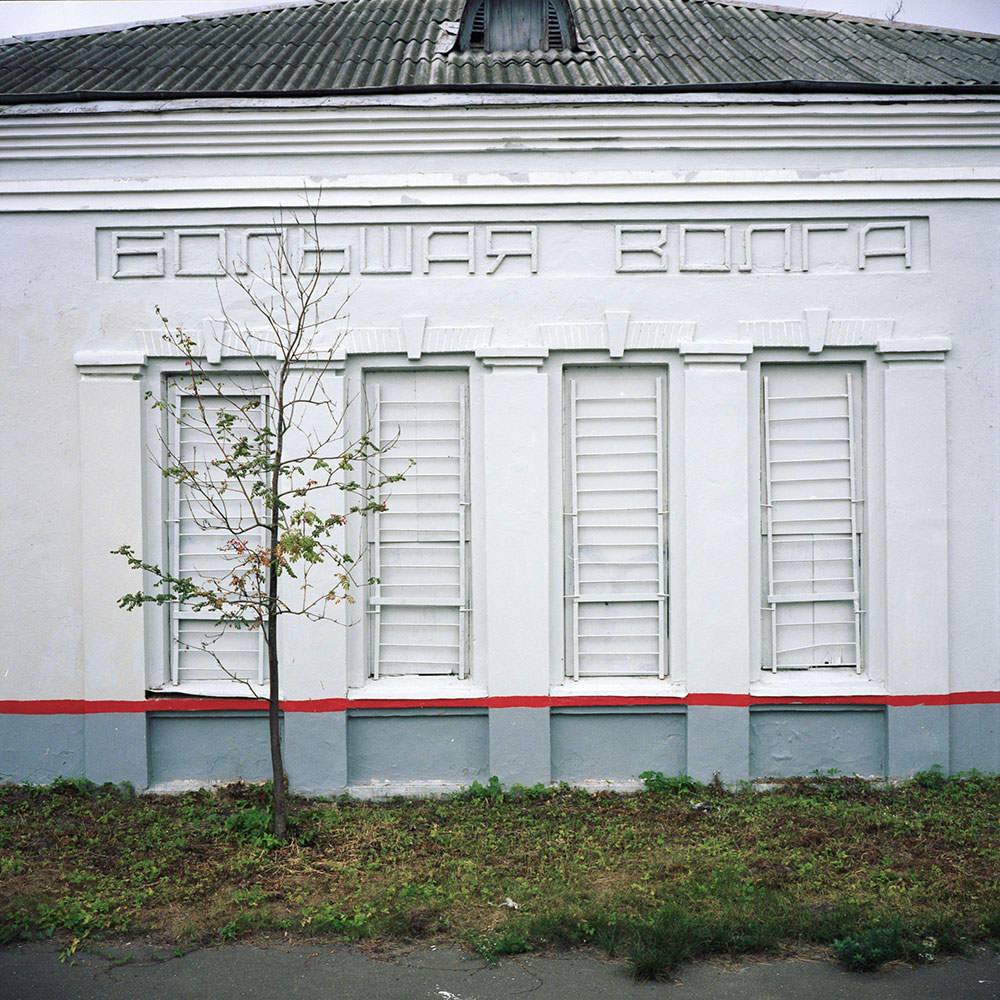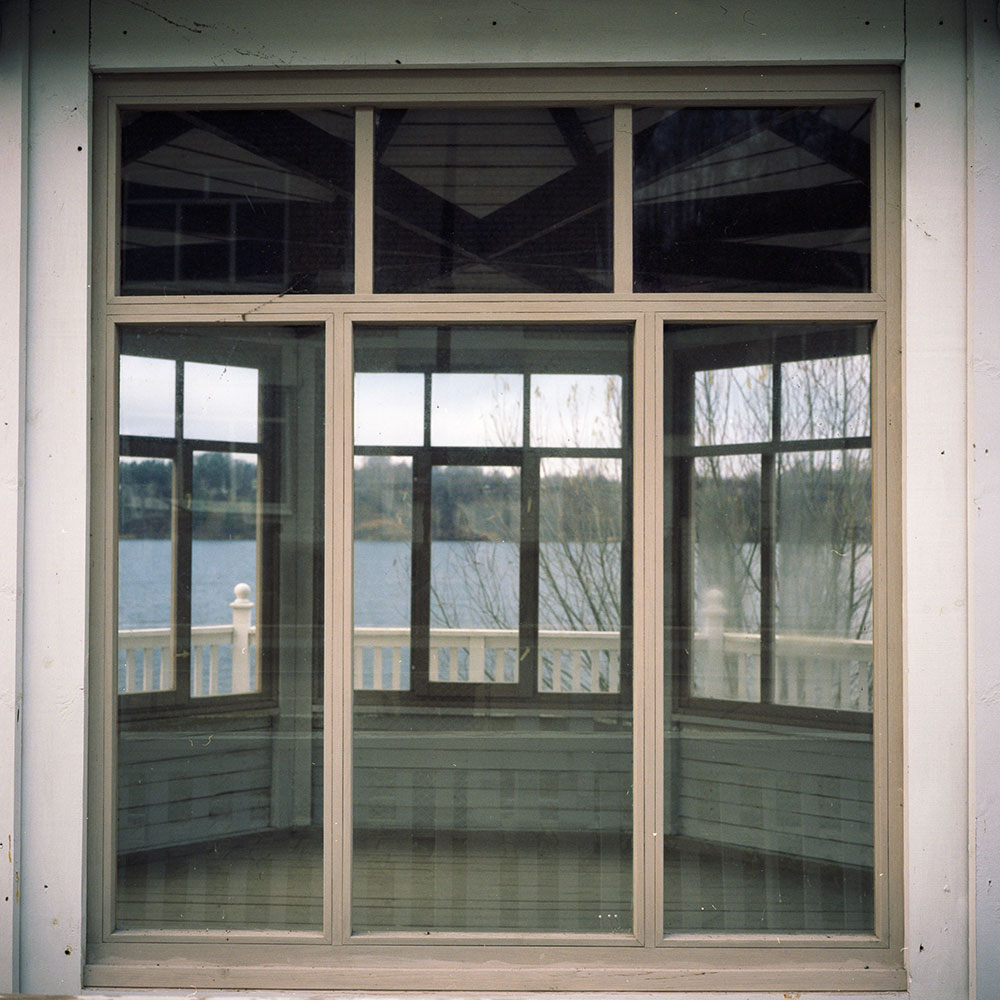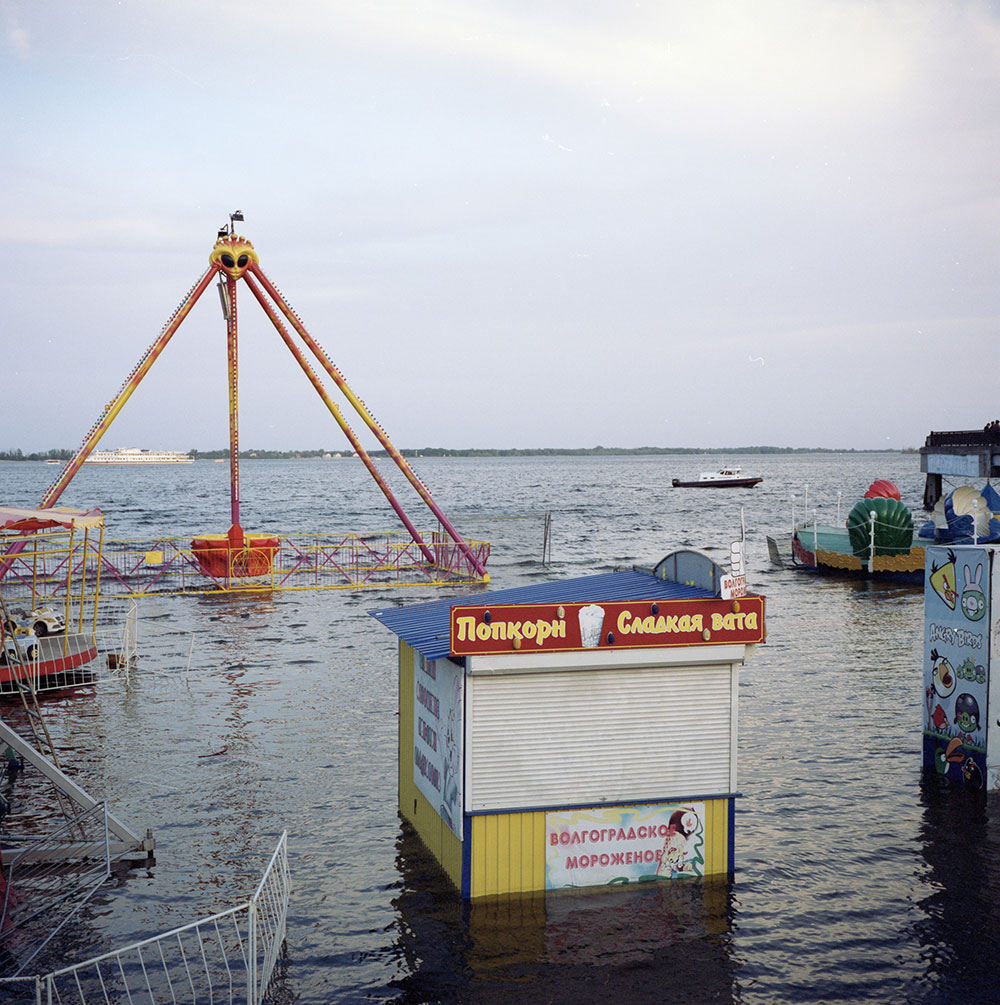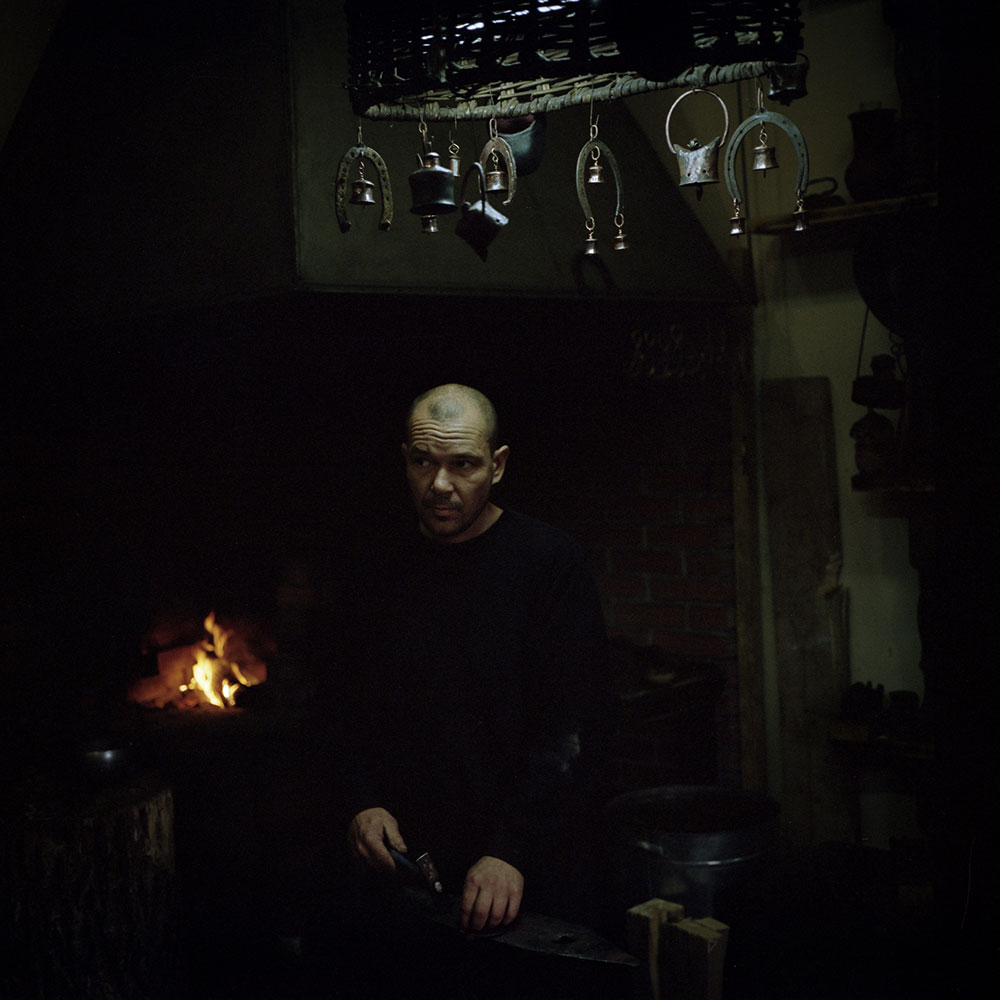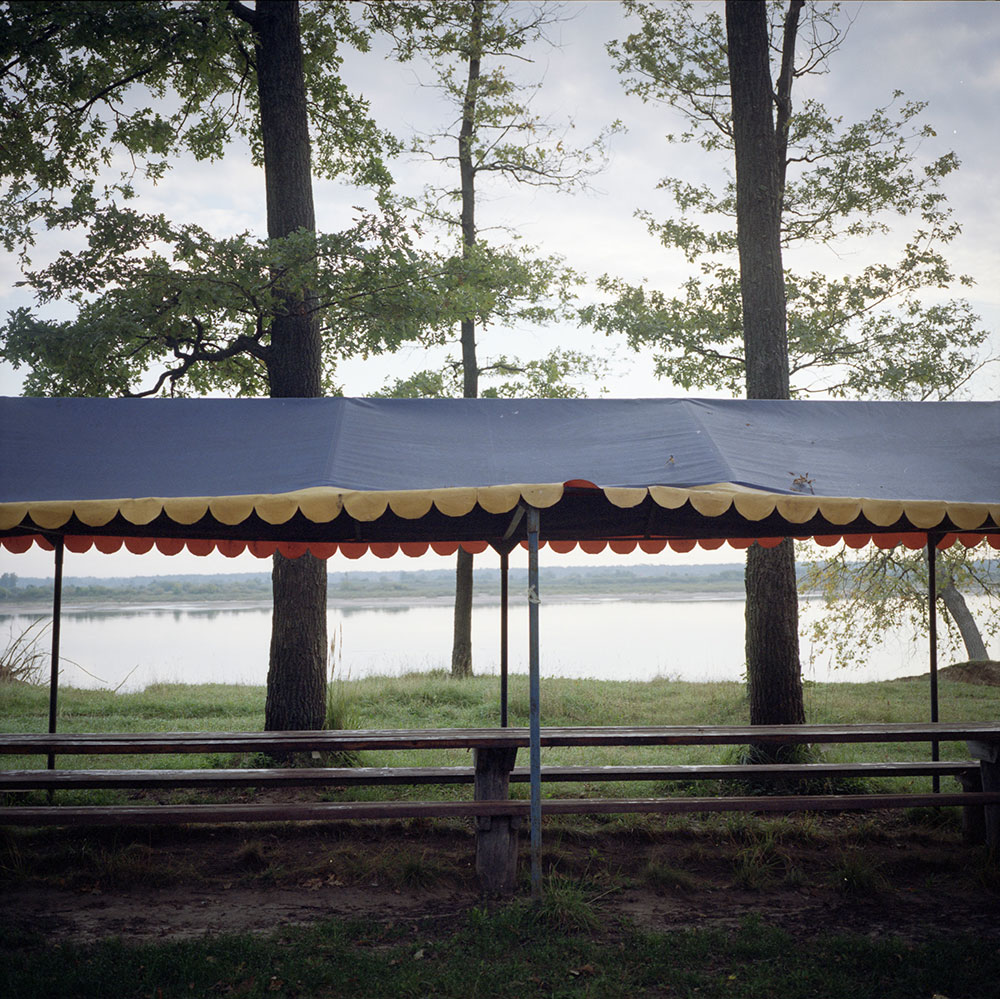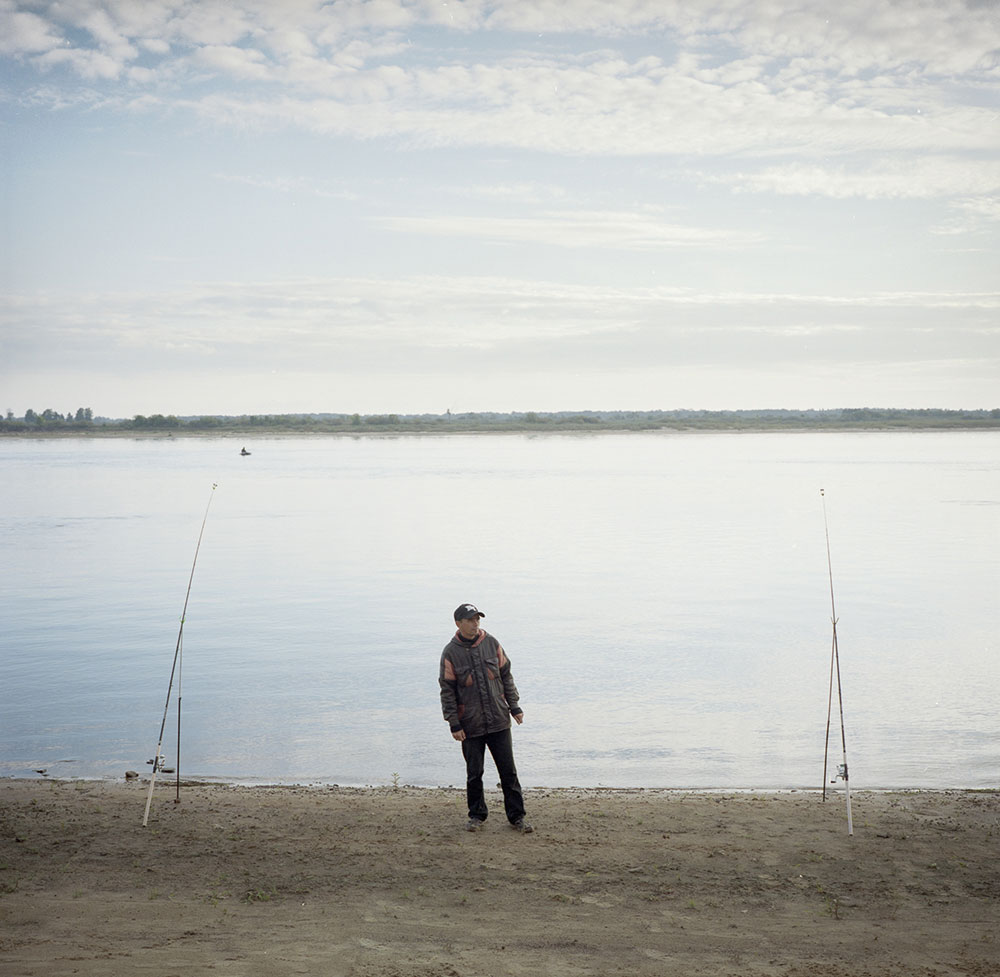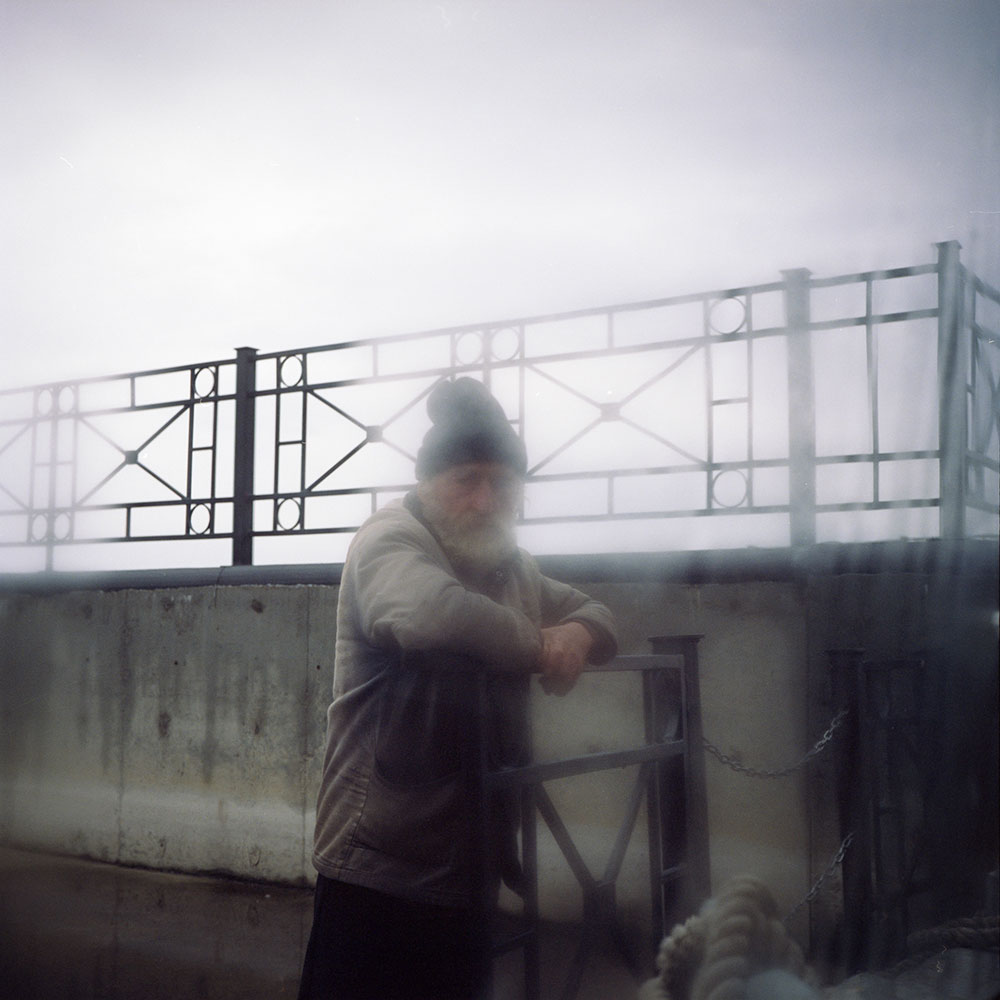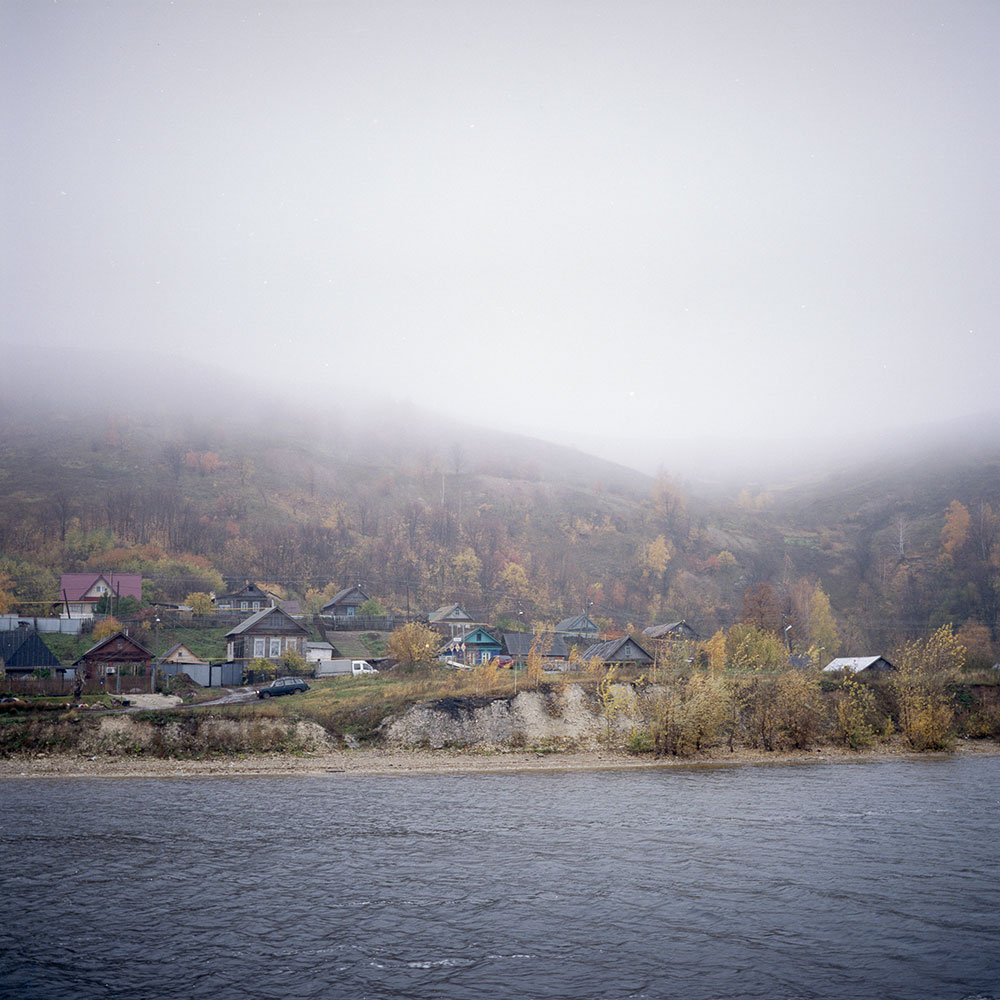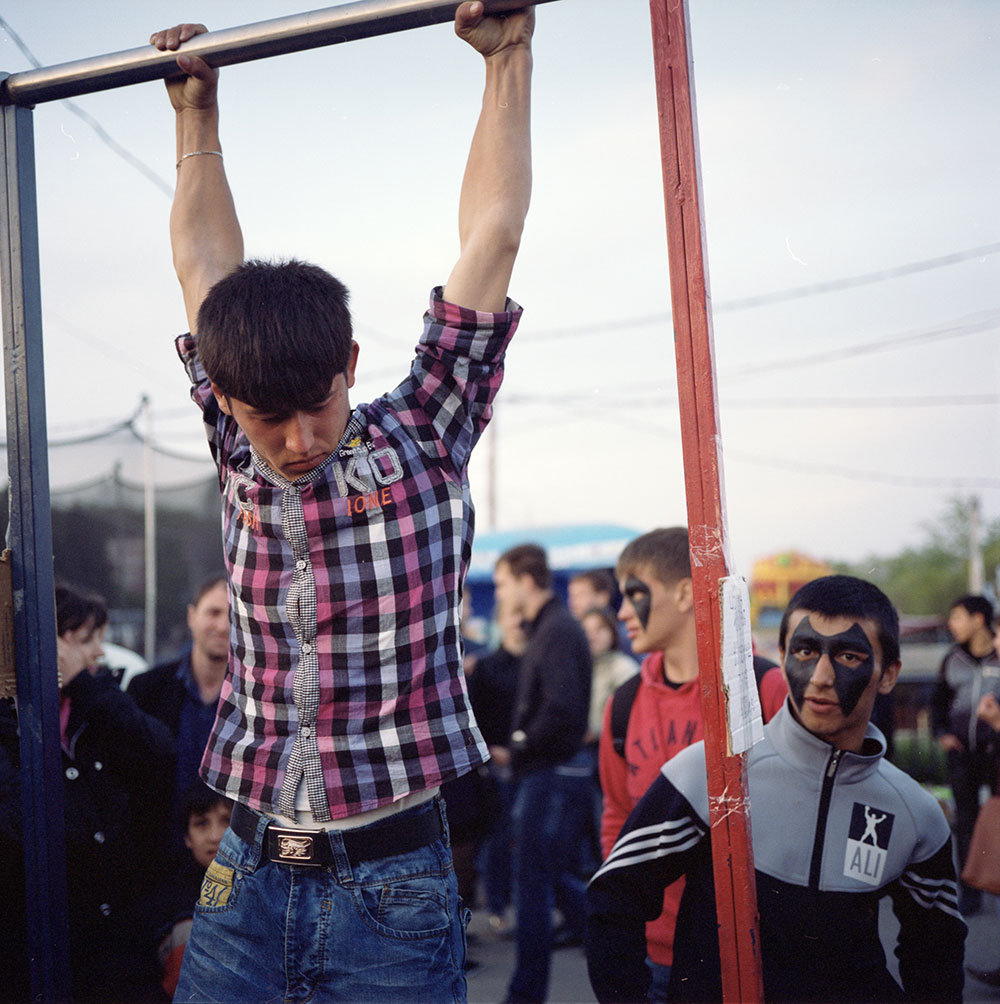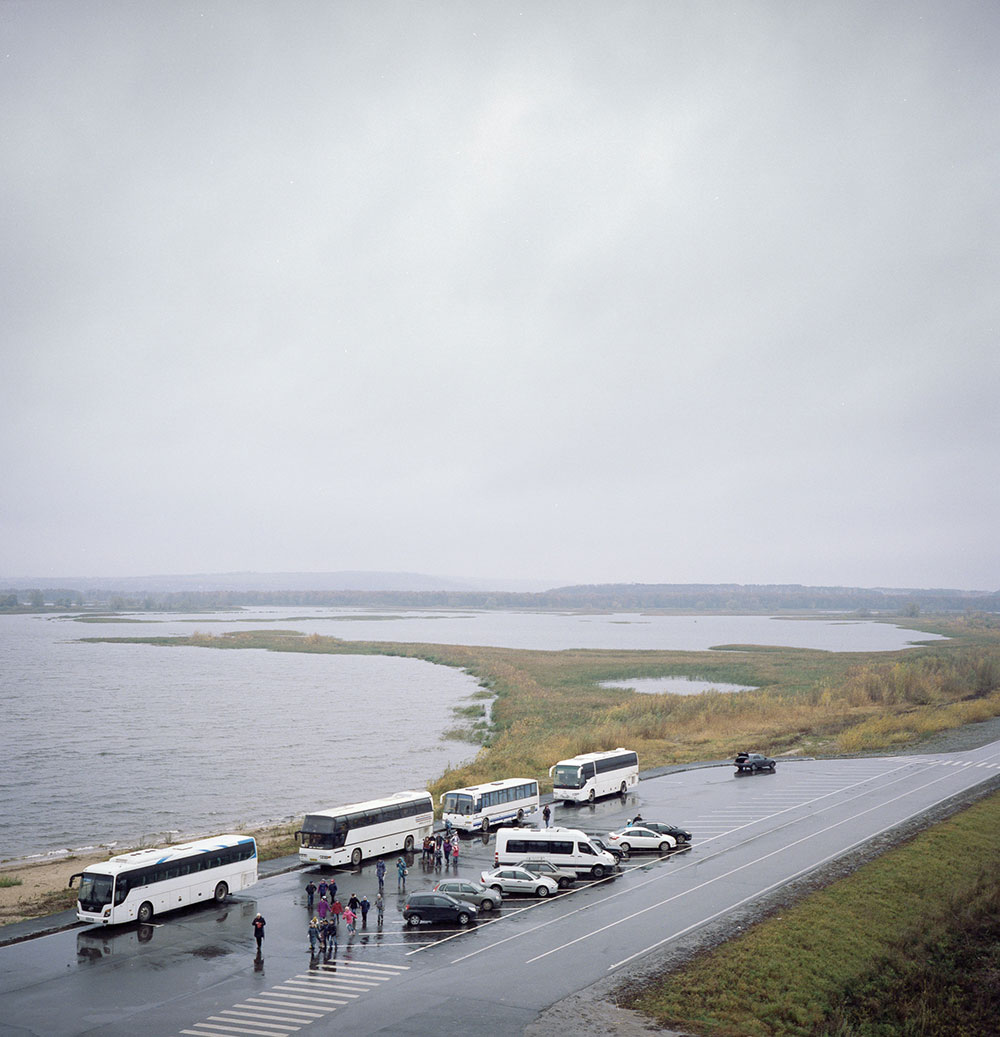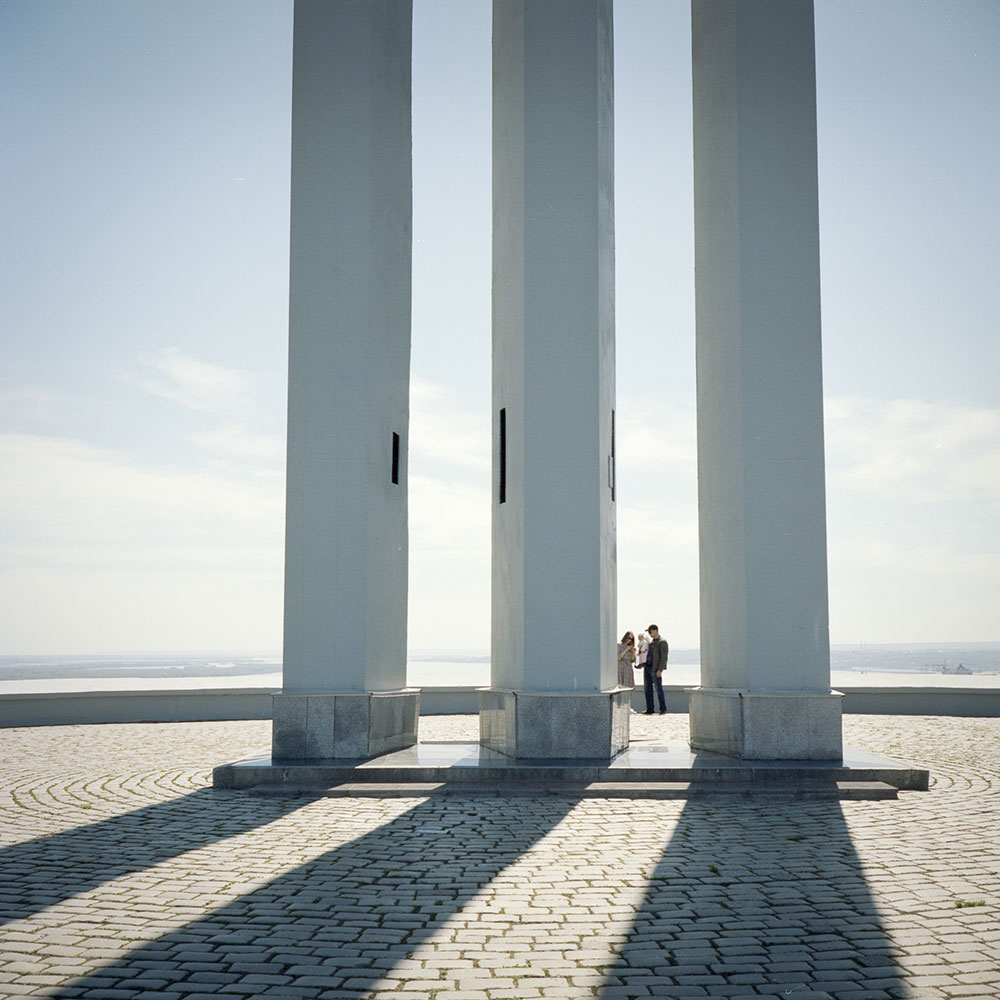A river joins up disparate cultures like the chapters of a novel. This narrative quality is what drew photographer Dennis Baburov to the Volga, Russia’s longest river, which has been celebrated in fairy tales, paintings and poems. Baburov is interested in stories: through shooting landscapes and people, his previous works offer snapshots of different communities. Big Volga, his latest ongoing project, is, like the river itself, a work of considerable scale.
“What is the Volga today? In what way are the people living alongside it different to anyone else? And what will happen to it in the years to come?” These are the questions Baburov posed when he begun the series in 2014. Tracing life on the banks of the river, he has so far travelled to Ploys, Sviyazhck, Dubna, Volgograd and Saratov, towns which have experienced significant change in recent years.
The Volga, by contrast is perpetually serene, or that is how it appears in paintings by the likes of Isaak Levitan and Alexei Savrasov. In On the Volga, 19th Century Russian poet Nikolai Nekrasov wrote: “I’ve changed a lot, but you are the same / So light, so majestic, as you used to be.” Yet, the Volga was once known as a river of extremes, and as Baburov notes “people inevitably affect the landscape, the river’s course and composition.”
One of the difficulties of photographing life on the river is that it is becoming scarce, with many people leaving for cities. Ploys, for example, is regarded as a seasonal town, where Prime Minister Dmitry Medvedev has his dacha. This decline in industry beside the Volga has improved the river’s ecological balance. “Even though small towns are disappearing, I’ve heard that there are now more fish in the river,” said Baburov.
The Volga may be at a disconnect from Russia and its people but it remains a national symbol. Baburov hopes that this is the same for photography. Big Volga is an attempt at establishing Russian photography, and questioning what that might mean.
Text: Liza Premiyak
Image: Dennis Baburov


